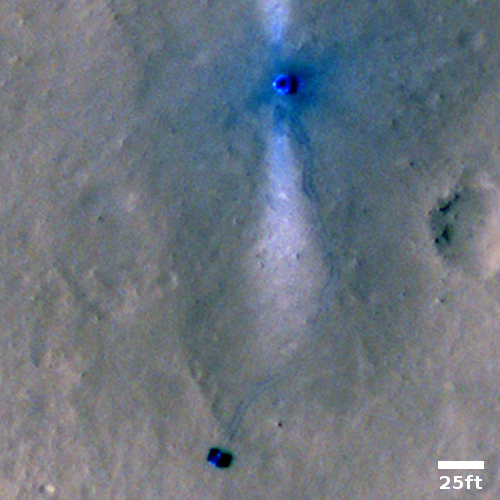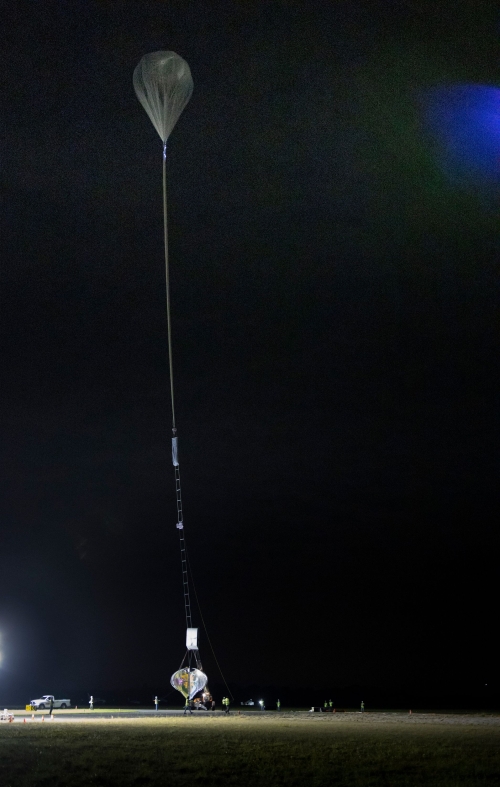Astronomers discover “comet” bigger than the largest comets approaching inner solar system
Astronomers have discovered an object 80 to 100 miles in diameter, larger than the largest comets, approaching the inner solar system and coming from the theorized Oort Cloud of material thought to exist between a tenth and a third of a light year from the Sun.
The object is probably rich in ice like a comet and is currently around three billion kilometres from the Sun. It will reach its closest point, known as perihelion, in 2031. At that time, it will be positioned below the plane of the solar system, near the orbit of Saturn.
Part of the interest in C/2014 UN271 is that it may be something of a transition object. Astronomers believe that many of the long period comets, that occasionally appear with bright tails, actually come from the Oort Cloud. Stars wandering near the Sun can nudge these objects from their positions and over millennia they work their way inwards, with the gravity of the giant planets tweaking their paths on each visit until they reside where we see them today.
“The fact that [C/2014 UN271] has a perihelion so far away from the Sun might be telling us that it’s done this a couple of times but is still in that process of eventually becoming some of those long period comets we know and love,” explains Meg Schwamb a Kuiper Belt and Oort Cloud expert at Queen’s University Belfast.
Initially astronomers thought because of its size that it was not a comet, but new observations have detected the first signs of a coma, suggesting that it will provide us a very interesting and extended show when it reaches its closest point in 2031. Because that perihelion is around the orbit of Saturn, the object will not be traveling very fast, so its passage through the inner solar system will take several years. Its size also suggests it will have a lot of material that can sublimate off to produce a tail.
The object was discovered by two astronomers, Gary Bernstein and Pedro Bernardinelli. If it turns out to be a comet it will then be named Comet Bernardinelli-Bernstein, or Comet B-B for short.
UPDATE: It is official. The object is now officially a comet, and named Comet Bernardinelli-Bernstein.
Astronomers have discovered an object 80 to 100 miles in diameter, larger than the largest comets, approaching the inner solar system and coming from the theorized Oort Cloud of material thought to exist between a tenth and a third of a light year from the Sun.
The object is probably rich in ice like a comet and is currently around three billion kilometres from the Sun. It will reach its closest point, known as perihelion, in 2031. At that time, it will be positioned below the plane of the solar system, near the orbit of Saturn.
Part of the interest in C/2014 UN271 is that it may be something of a transition object. Astronomers believe that many of the long period comets, that occasionally appear with bright tails, actually come from the Oort Cloud. Stars wandering near the Sun can nudge these objects from their positions and over millennia they work their way inwards, with the gravity of the giant planets tweaking their paths on each visit until they reside where we see them today.
“The fact that [C/2014 UN271] has a perihelion so far away from the Sun might be telling us that it’s done this a couple of times but is still in that process of eventually becoming some of those long period comets we know and love,” explains Meg Schwamb a Kuiper Belt and Oort Cloud expert at Queen’s University Belfast.
Initially astronomers thought because of its size that it was not a comet, but new observations have detected the first signs of a coma, suggesting that it will provide us a very interesting and extended show when it reaches its closest point in 2031. Because that perihelion is around the orbit of Saturn, the object will not be traveling very fast, so its passage through the inner solar system will take several years. Its size also suggests it will have a lot of material that can sublimate off to produce a tail.
The object was discovered by two astronomers, Gary Bernstein and Pedro Bernardinelli. If it turns out to be a comet it will then be named Comet Bernardinelli-Bernstein, or Comet B-B for short.
UPDATE: It is official. The object is now officially a comet, and named Comet Bernardinelli-Bernstein.











